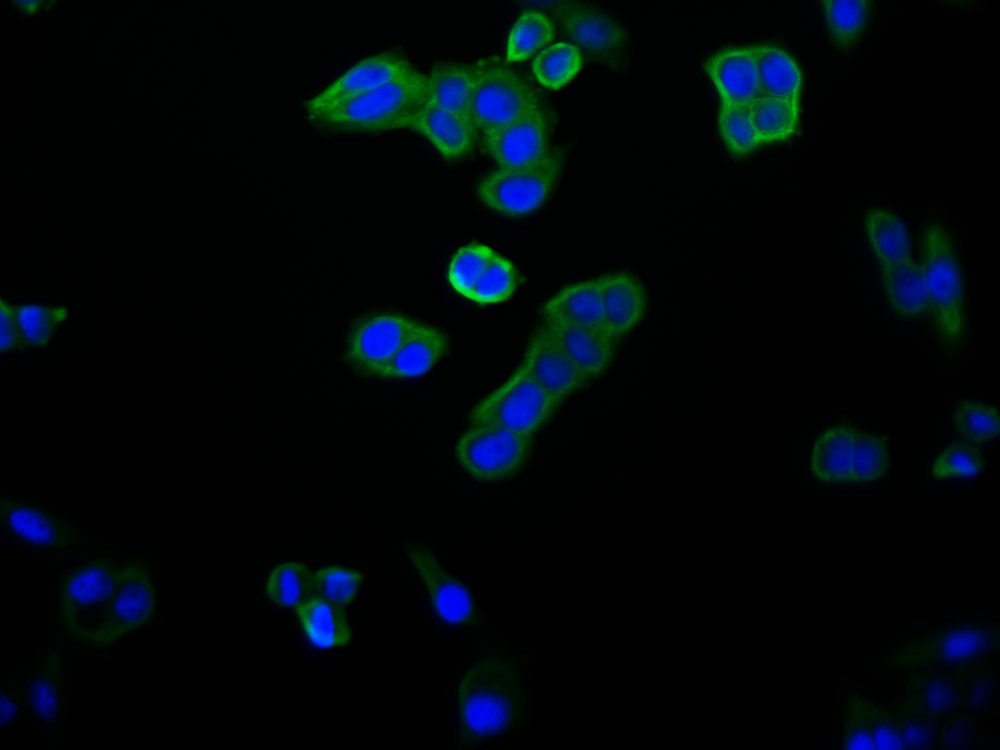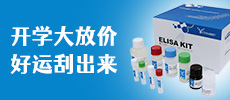NPPA Antibody
-
中文名稱:NPPA兔多克隆抗體
-
貨號:CSB-PA981457
-
規(guī)格:¥1100
-
其他:
產(chǎn)品詳情
-
Uniprot No.:
-
基因名:
-
別名:ANF antibody; ANF_HUMAN antibody; ANP antibody; ATFB6 antibody; Atrial natriuretic factor antibody; Atrial natriuretic peptide antibody; Atriopeptin antibody; Cardiodilatin antibody; Cardiodilatin related peptide antibody; Cardiodilatin-related peptide antibody; Cardionatrin antibody; CDD ANF antibody; CDD antibody; CDD-ANF antibody; CDP antibody; Natriuretic peptide A antibody; Natriuretic peptide precursor A antibody; NPPA antibody; PND antibody; Prepronatriodilatin antibody
-
宿主:Rabbit
-
反應(yīng)種屬:Human,Mouse,Rat
-
免疫原:Synthetic peptide of Human NPPA
-
免疫原種屬:Homo sapiens (Human)
-
標(biāo)記方式:Non-conjugated
-
抗體亞型:IgG
-
純化方式:Antigen affinity purification
-
濃度:It differs from different batches. Please contact us to confirm it.
-
保存緩沖液:-20°C, pH7.4 PBS, 0.05% NaN3, 40% Glycerol
-
產(chǎn)品提供形式:Liquid
-
應(yīng)用范圍:ELISA
-
推薦稀釋比:
Application Recommended Dilution ELISA 1:2000-1:10000 -
Protocols:
-
儲存條件:Upon receipt, store at -20°C or -80°C. Avoid repeated freeze.
-
貨期:Basically, we can dispatch the products out in 1-3 working days after receiving your orders. Delivery time maybe differs from different purchasing way or location, please kindly consult your local distributors for specific delivery time.
相關(guān)產(chǎn)品
靶點詳情
-
功能:Hormone that plays a key role in mediating cardio-renal homeostasis, and is involved in vascular remodeling and regulating energy metabolism. Acts by specifically binding and stimulating NPR1 to produce cGMP, which in turn activates effector proteins, such as PRKG1, that drive various biological responses. Regulates vasodilation, natriuresis, diuresis and aldosterone synthesis and is therefore essential for regulating blood pressure, controlling the extracellular fluid volume and maintaining the fluid-electrolyte balance. Also involved in inhibiting cardiac remodeling and cardiac hypertrophy by inducing cardiomyocyte apoptosis and attenuating the growth of cardiomyocytes and fibroblasts. Plays a role in female pregnancy by promoting trophoblast invasion and spiral artery remodeling in uterus, and thus prevents pregnancy-induced hypertension. In adipose tissue, acts in various cGMP- and PKG-dependent pathways to regulate lipid metabolism and energy homeostasis. This includes upregulating lipid metabolism and mitochondrial oxygen utilization by activating the AMP-activated protein kinase (AMPK), and increasing energy expenditure by acting via MAPK11 to promote the UCP1-dependent thermogenesis of brown adipose tissue. Binds the clearance receptor NPR3 which removes the hormone from circulation.; May have a role in cardio-renal homeostasis through regulation of natriuresis, diuresis, vasodilation, and inhibiting aldosterone synthesis. In vitro, promotes the production of cGMP and induces vasodilation. May promote natriuresis, at least in part, by enhancing prostaglandin E2 synthesis resulting in the inhibition of renal Na+-K+-ATPase. However reports on the involvement of this peptide in mammal blood volume and blood pressure homeostasis are conflicting; according to a report, in vivo it is not sufficient to activate cGMP and does not inhibit collecting duct transport nor effect diuresis and natriuresis. Appears to bind to specific receptors that are distinct from the receptors bound by atrial natriuretic peptide and vessel dilator. Possibly enhances protein excretion in urine by decreasing proximal tubular protein reabsorption.; May have a role in cardio-renal homeostasis through regulation of natriuresis, diuresis, and vasodilation. In vitro, promotes the production of cGMP and induces vasodilation. May promote natriuresis, at least in part, by enhancing prostaglandin E2 synthesis resulting in the inhibition of renal Na+-K+-ATPase. However reports on the involvement of this peptide in mammal blood volume and blood pressure homeostasis are conflicting; according to a report it is not sufficient to activate cGMP and does not inhibit collecting duct transport nor effect diuresis and natriuresis. Appears to bind to specific receptors that are distinct from the receptors bound by the atrial natriuretic and long-acting natriuretic peptides. Possibly functions in protein excretion in urine by maintaining the integrity of the proximal tubules and enhancing protein excretion by decreasing proximal tubular protein reabsorption.; May have a role in cardio-renal homeostasis through regulation of diuresis and inhibiting aldosterone synthesis. In vitro, promotes the production of cGMP and induces vasodilation. May promote natriuresis, at least in part, by enhancing prostaglandin E2 synthesis resulting in the inhibition of renal Na+-K+-ATPase. May have a role in potassium excretion but not sodium excretion (natriuresis). Possibly enhances protein excretion in urine by decreasing proximal tubular protein reabsorption.; Hormone produced in the kidneys that appears to be important for maintaining cardio-renal homeostasis. Mediates vasodilation, natriuresis and diuresis primarily in the renal system, in order to maintain the extracellular fluid volume and control the fluid-electrolyte balance. Specifically binds and stimulates cGMP production by renal transmembrane receptors, likely NPR1. Urodilatin not ANP, may be the natriuretic peptide responsible for the regulation of sodium and water homeostasis in the kidney.; May have a role in cardio-renal homeostasis through regulation of natriuresis and vasodilation. In vivo promotes natriuresis and in vitro, vasodilates renal artery strips.; May have a role in cardio-renal homeostasis through regulation of natriuresis and vasodilation. In vivo promotes natriuresis and in vitro, vasodilates renal artery strips.; May have a role in cardio-renal homeostasis through regulation of regulation of natriuresis and vasodilation. In vivo promotes natriuresis. In vitro, vasodilates intestinal smooth muscle but not smooth muscle strips.; May have a role in cardio-renal homeostasis through regulation of natriuresis and vasodilation. In vivo promotes natriuresis. In vitro, selectively vasodilates intestinal and vascular smooth muscle strips.; May have a role in cardio-renal homeostasis through regulation of natriuresis and vasodilation. In vivo promotes natriuresis. In vitro, selectively vasodilates intestinal smooth muscle but not vascular smooth muscle strips.
-
基因功能參考文獻:
- platelet aggregation resulted to be higher in patients with atrial fibrillation carrying the C2238 ANP gene variant with respect to non-carriers. In conclusions, C2238/alphaANP promotes platelet aggregation through the activation of Nox2 and the reduction of cAMP. PMID: 28630469
- The results of our study demonstrated that the effect of NPPA SNPs rs5063 and rs198358 on central obesity might be modified by smoking in the Chinese Han population. PMID: 30262711
- Upon cardiac stress, Nppa and Nppb are strongly upregulated in the ventricular myocardium. (Review) PMID: 29302701
- Suggest that pro-ANP/corin/NPR-C signaling is dominant in the vascular system in preeclampsia. PMID: 29523263
- Data indicate the blood pressure-lowering effect of atrial natriuretic peptide (ANP) in the general population. PMID: 29237677
- Low circulating MR-proANP at the time of device implantation is associated with cardiac resynchronization therapy response and more favourable outcome. PMID: 28096288
- An increase in year-by-year BP variability over the past 6 years is associated with elevated plasma levels of ANP and BNP in the Japanese general population. PMID: 28252040
- High plasma levels of MR-proANP are associated with the incidence of atrial fibrillation and stroke in the middle-aged and elderly population. PMID: 28195503
- The young adults displayed significant negative associations between MR-proANP and several components of the metabolic syndrome, whereas such associations were not found among the adolescents besides triglycerides and diastolic BP. PMID: 28338810
- In summary, there were no significant differences in ANP and BNP levels after percutaneous epicardial left atrial appendage suture ligation using LARIAT device 3 months after procedure. PMID: 28456775
- NPPA SNPs were not associated with insulin resistance in older adults. PMID: 27101535
- TIMP-4, NT-proANP, NT-proBNP were strongest associated with PAF and AHRE. The discriminatory performance of CHADS2-VASc for PAF was increased by addition of selected biomarkers. PMID: 28431065
- the G allele of the genetic variant rs5068 in African Americans is associated with lower prevalence of metabolic syndrome and lower triglycerides values PMID: 29253899
- ANP inhibits TGF-beta1-induced EMT in 16HBE-14o and A549 cells through cGMP/PKG signaling, by which it targets TGF-beta1/Smad3 via attenuating phosphorylation of Smad3. These findings suggest the potential of ANP in the treatment on pulmonary diseases with airway remodeling. PMID: 28229930
- the ANP T1766C gene polymorphism may be associated with the risk of essential hypertension, and the 1766C allele may be a protective factor against the disease PMID: 27136577
- increased plasma proANP should be a protective factor of hyperuricemia among middle-aged and old women PMID: 28076299
- Midregional-proANP could accurately detect HF in children and adolescents. Its diagnostic performance was comparable with that of NT-proBNP, regardless of the underlying condition. PMID: 27220692
- Corin and atrial natriuretic peptide A were most abundant in the proximal convoluted tubules and the medullary connecting ducts. PMID: 27343265
- This study indicates that in children with community-acquired pneumonia, sTREM-1, Midregional-proANP, and Midregional-proADM blood levels have poor abilities to differentiate bacterial from viral diseases or to identify severe cases. PMID: 27846213
- Higher levels of PCT, a marker of infection, and MRproANP, a marker for hemodynamic stress, were independently associated with ischemic stroke risk. PCT was specifically associated with small vessel and MRproANP with cardioembolic stroke risk. PMID: 27197849
- The present results demonstrate that C2238/ANP-minor allele carrier status is an independent risk factor for acute coronary syndromes recurrence in an Italian cohort of ischemic heart disease patients over the long term, and they support the role of C2238/ANP-minor allele as a negative prognostic factor in coronary artery disease patients. PMID: 25252038
- Both NT-proANP and NT-proBNP levels were higher in coronary artery disease patients experiencing MACEs following percutaneous coronary intervention in a non-primary setting. Notably, only NT-proANP levels significantly affected prognosis after PCI. PMID: 26987266
- As a risk factor, ANP gene polymorphisms may affect hypertension. Despite the small sample size in this study, it is the first research assessing the ANP gene polymorphisms in both Essential Hypertensive and Type 2 Diabetes Mellitus patients among Malaysian population. PMID: 27413750
- The NPPA and NPPB gene polymorphisms are associated with blood pressure in newborns. PMID: 25371308
- A panel of three biomarkers (MR-proANP, PCT, and MR-proADM) in patients presenting to the emergency unit with acute dyspnea provides information about the probability of acute heart failure, nonsurvival, and pneumonia. PMID: 26748496
- anti-inflammatory and immunomodulatory effect on IL-1beta release and on NF-kB/NALP3/caspase-1 activation PMID: 26616294
- prevalence of p.(Ser64Arg) mutation is low in the general population as is the prevalence of atrial fibrillation in mutation carriers PMID: 26200358
- Gene polymorphism of ANP (2238T>C) may be associated with developing preeclampsia during pregnancy. PMID: 26686590
- C2238/alphaANP downregulates ApoE in vascular smooth muscle cells through type C natriuretic peptide receptor-dependent activation of Egr-1 and the consequent upregulation of miR199a. PMID: 26720342
- ANP levels rose steeply after paroxysmal supraventricular tachycardia and then reduced at 30 min after the termination. PMID: 26801306
- Age-related elevation of plasma ANP levels preceded the development of CKD in the general population of Japan, raising a possibility for ANP being involved in the development of CKD. PMID: 26499263
- N-terminal pro-brain natriuretic PMID: 26244664
- Plasma MR-proANP independently predicts all-cause mortality and MACE in patients with STEMI. PMID: 24906365
- The C2238/alphaANP variant is a negative modulator of both viability and function of coronary artery smooth muscle cells. PMID: 25401746
- Circulating atrial natriuretic peptide genetic association study identifies a novel gene cluster associated with stroke in whites. PMID: 25452597
- In this review, we discuss the role of ANP in cardiovascular biology and disease. PMID: 26074089
- Our results suggest that the down-regulation of ANP gene expression at mRNA and protein levels and up-regulated CYP11B2 protein expression levels may be correlated with the essential hypertension PMID: 25917967
- study to characterize in-depth the cardiovascular and metabolic phenotype associated with rs5068 in a cohort of heart failure patients PMID: 25129277
- Three NPPA-NPPB polymorphisms (rs632793, rs198388 and rs198389) were associated with reduced risk of left ventricular dysfunction in CAD patients with hyperlipidemia. PMID: 25400811
- plasma mid-regional pro-atrial natriuretic peptide helps predict pre-eclampsia PMID: 24853905
- ANP is present in chondrocytes in all the three zones of the articular cartilage, sugesting that ANP may play a role in cartilage metabolism. PMID: 25864764
- ANP prevents cancer metastasis by inhibiting the adhesion of tumor cells to inflamed endothelial cells PMID: 25775533
- the contribution of ANP in different aspect of innate as well as adaptive immunity also with respect to the excessive cell growth in physiological and/or pathological conditions. PMID: 24973596
- NPPA acts on the NPR1 receptor, is expressed in human dorsal root and trigeminal ganglia, and the spinal cord. PMID: 25123163
- Elevated levels of NPPA but not of proANP or ANP proteins in left ventricular tissue, may be due to posttranscripcional regulation of NPPA or different pathways for ANP secretion between the atrium and ventricle during heart failure. PMID: 24599027
- the ANP genetic polymorphism and serum ANP levels could be potential biomarkers for early detection of ischemic stroke PMID: 24654911
- Presence of the rs5065 Atrial natriuretic peptide gene polymorphism is associated with reduced risk of the presence and severity of Coronary artery disease in an Iranian population, independent of the general risk factors of Coronary artery disease. PMID: 24487939
- Plasma ANP level was elevated in individuals with sleep disordered breathing among a large Japanese urban population. PMID: 24673969
- found a significant negative association between patients' ANP plasma concentrations and anxiety, craving for alcohol and perceived stress. PMID: 24166646
- CT-proAVP and MR-proANP have a significant correlation to surrogate markers of the post-cardiac arrest syndrome PMID: 24617620
顯示更多
收起更多
-
相關(guān)疾病:Atrial standstill 2 (ATRST2); Atrial fibrillation, familial, 6 (ATFB6)
-
亞細胞定位:[Long-acting natriuretic peptide]: Secreted.; [Vessel dilator]: Secreted.; [Kaliuretic peptide]: Secreted.; [Urodilatin]: Secreted.; [Atrial natriuretic peptide]: Secreted. Perikaryon. Cell projection.; [Atriopeptin-3]: Secreted.
-
蛋白家族:Natriuretic peptide family
-
組織特異性:[Urodilatin]: Detected in the kidney distal tubular cells (at protein level). Present in urine (at protein level).; [Atrial natriuretic peptide]: Detected in atrial and ventricular plasma samples, and in adipocytes (at protein level). Detected in urine in
-
數(shù)據(jù)庫鏈接:
Most popular with customers
-
-
YWHAB Recombinant Monoclonal Antibody
Applications: ELISA, WB, IF, FC
Species Reactivity: Human, Mouse, Rat
-
Phospho-YAP1 (S127) Recombinant Monoclonal Antibody
Applications: ELISA, WB, IHC
Species Reactivity: Human
-
-
-
-
-




















